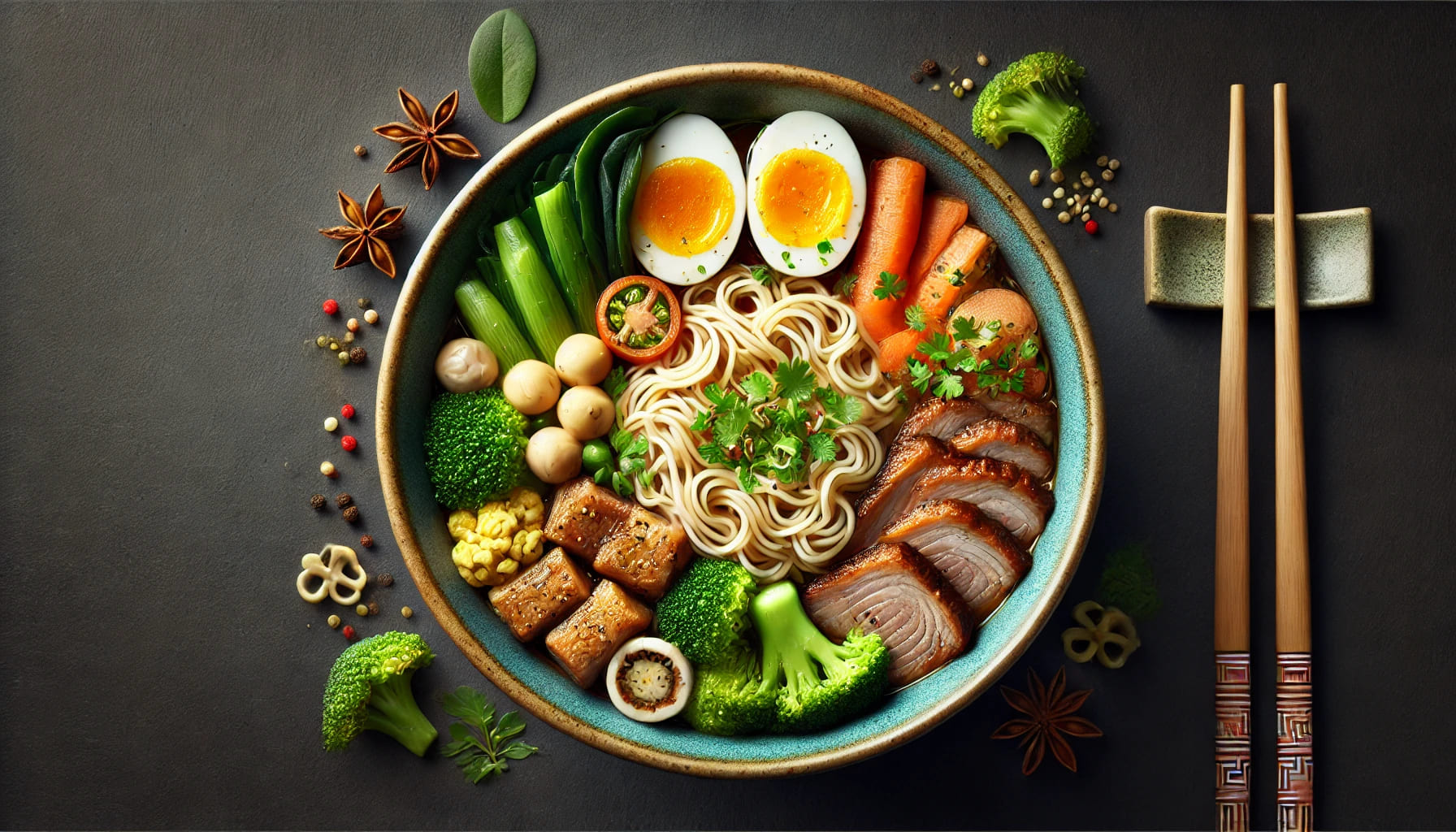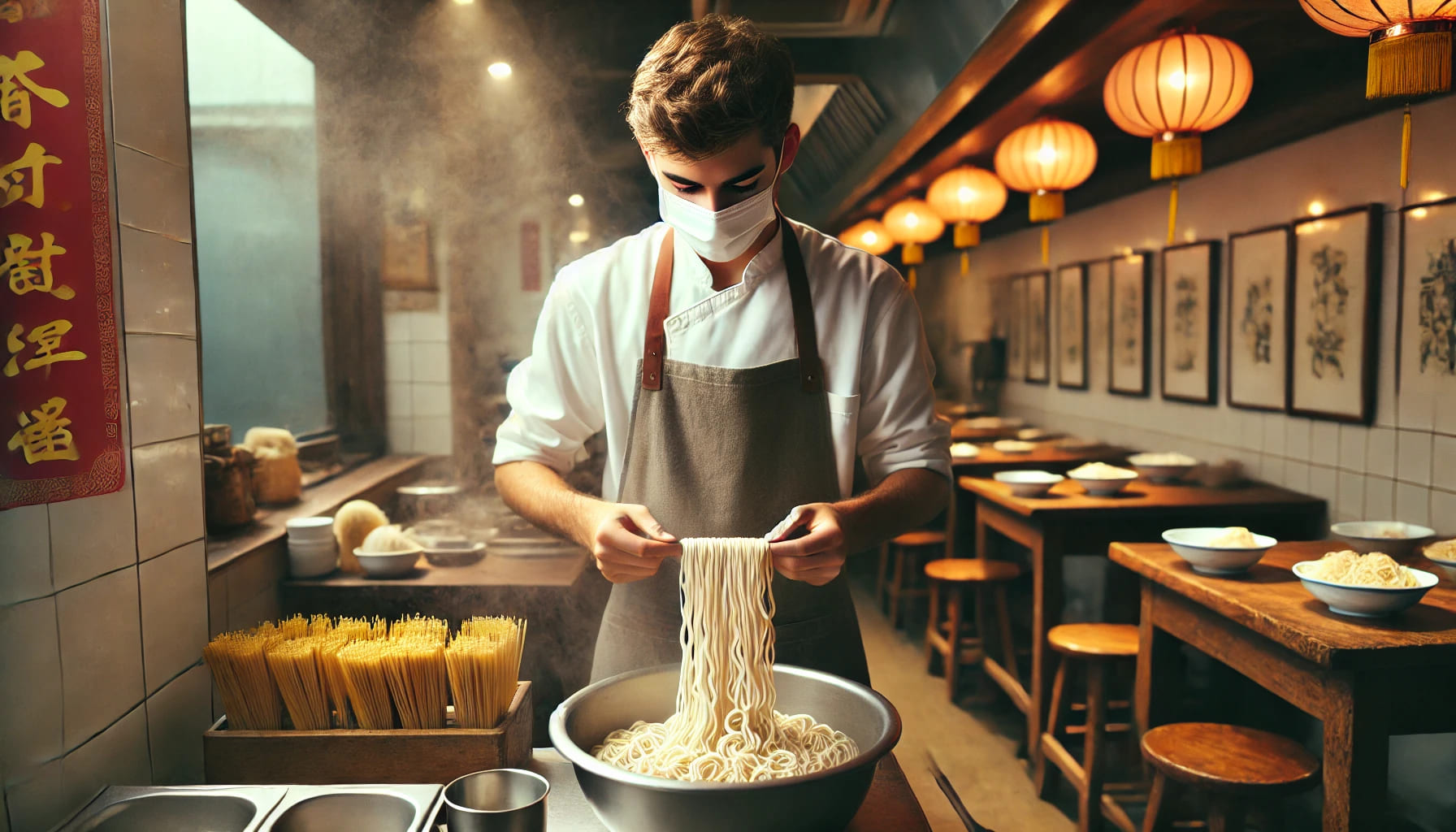
What are the Main Ingredients in Chinese Noodles?
What are the Main Ingredients in Chinese Noodles?
Chinese noodles are a beloved staple in Chinese cuisine, known for their versatility and unique flavors. Whether you're enjoying a bowl of hot, steaming noodle soup or stir-fried noodles with vegetables and meat, the ingredients used in making Chinese noodles play a crucial role in defining their texture and taste. In this article, we'll explore the essential ingredients in Chinese noodles and how each contributes to the final dish. Additionally, we will introduce a remarkable restaurant, The Magic Noodle in Las Vegas, where you can experience the best of Chinese noodle dishes.
The Magic Noodle in Las Vegas

The Magic Noodle is a renowned restaurant in Las Vegas, celebrated for its authentic and delicious Chinese noodle dishes. This eatery takes pride in using traditional techniques and high-quality ingredients to create an unforgettable dining experience. Visitors to The Magic Noodle can expect to enjoy a wide variety of noodles, each prepared with care and expertise, ensuring a taste that transports them straight to the heart of China. Whether you're a fan of hand-pulled noodles or prefer the smooth texture of rice noodles, The Magic Noodle has something to satisfy every palate. Here is The Magic Noodle website: https://themagicnoodle.net/
The Basic Components of Chinese Noodles
- Wheat Flour
- Water
- Salt
- Eggs
Chinese noodle recipes vary widely, but these four ingredients form the foundation of most traditional noodle types.
Wheat Flour
Wheat flour is the primary ingredient in many types of Chinese noodles, including the popular Chinese noodle varieties like hand-pulled noodles (lamian) and knife-cut noodles (dao xiao mian). The gluten in wheat flour provides the elasticity and chewiness that are characteristic of these noodles. Wheat flour noodles are versatile and can be used in a variety of dishes, from soups to stir-fries.
Water
Water is a crucial ingredient that determines the texture of the noodles. The amount of water used can vary depending on the type of noodle being made. For instance, less water results in firmer noodles, while more water creates a softer, more pliable dough. The water content is carefully adjusted to achieve the desired consistency and texture, making the noodles suitable for different cooking methods.
Salt
Salt is added to the dough to enhance the flavor and improve the texture. It strengthens the gluten network, making the noodles more elastic and resilient during cooking. Additionally, salt acts as a preservative, extending the shelf life of the noodles and ensuring they maintain their quality and taste.
Eggs
Eggs are often used in certain types of noodles to enrich the dough and provide a yellow hue. They add a subtle richness and a slightly chewy texture, common in egg noodles. The inclusion of eggs not only enhances the flavor but also improves the nutritional profile of the noodles, making them a wholesome choice for many dishes.
Additional Ingredients for Specialty Noodles
- Rice Flour
- Mung Bean Starch
- Tapioca Starch
- Alkaline Agents
Rice Flour
Rice flour is the main ingredient in rice noodles, such as vermicelli and flat rice noodles. These noodles are gluten-free and have a distinct, tender texture. Rice flour noodles are commonly used in dishes like pho and pad thai. They absorb flavors well and are ideal for both savory and sweet preparations, making them a versatile addition to any meal.
Mung Bean Starch
Mung bean starch is used to make translucent noodles, also known as cellophane or glass noodles. These noodles have a slippery, smooth texture and are often used in soups and stir-fries. Mung bean starch noodles are prized for their ability to soak up the flavors of the broth or sauce, enhancing the overall taste of the dish.
Tapioca Starch
Tapioca starch is sometimes added to noodle dough to improve the elasticity and give the noodles a slightly chewy texture. It's commonly used in combination with other flours. Tapioca starch enhances the mouthfeel of the noodles, making them more enjoyable to eat, especially in dishes that require a bit of chewiness.
Alkaline Agents
Alkaline agents, such as kansui (a mixture of potassium carbonate and sodium carbonate), are used in certain types of noodles like ramen. These agents give the noodles a distinct yellow color and a firm, springy texture. Alkaline noodles have a unique taste and are essential for creating authentic ramen, known for its characteristic bite and resilience.
Seasonings and Additives
- Soy Sauce
- Sesame Oil
- Garlic and Ginger
- Chili Oil
Soy Sauce

Soy sauce is a common seasoning used in noodle dishes, providing a rich, umami flavor. It is often added to noodle dough or used as a sauce in various noodle preparations. Soy sauce comes in various types, including light, dark, and thick soy sauce, each bringing a different depth of flavor to the dish.
Sesame Oil
Sesame oil adds a nutty aroma and flavor to noodles. A few drops of toasted sesame oil can enhance the taste of both the noodles and the accompanying broth or stir-fry. Sesame oil is used not only as a cooking ingredient but also as a finishing touch, adding a fragrant note to the final dish.
Garlic and Ginger
Garlic and ginger are essential aromatic ingredients in many Chinese noodle dishes. They add depth of flavor and a subtle heat that complements the noodles perfectly. These ingredients are often sautéed at the beginning of cooking to release their flavors, infusing the entire dish with their aromatic qualities.
Chili Oil
Chili oil is a popular condiment for adding heat and complexity to noodle dishes. It can be drizzled over the noodles or mixed into the dough for a spicy kick. Homemade chili oil, with its blend of spices and aromatic oils, provides a personalized touch to noodle dishes, allowing for customization of heat levels.
Traditional Chinese Noodle Dishes
- Lamian (Hand-Pulled Noodles)
- Dao Xiao Mian (Knife-Cut Noodles)
- Chow Mein (Stir-Fried Noodles)
- Zha Jiang Mian (Noodles with Soybean Paste)
Lamian (Hand-Pulled Noodles)
Lamian are made by repeatedly stretching and folding the dough to create long, thin strands. The process requires skill and results in noodles with a unique, chewy texture. Hand-pulled noodles are often served in rich broths or stir-fried with vegetables and meat, showcasing their versatility.
Dao Xiao Mian (Knife-Cut Noodles)
Dao xiao mian are made by shaving thin slices from a block of dough directly into boiling water. These noodles have an irregular shape and a hearty, chewy texture. Knife-cut noodles are typically served in hearty soups or stir-fried, providing a rustic and satisfying meal.
Chow Mein (Stir-Fried Noodles)
Chow mein is a popular dish made by stir-frying noodles with vegetables, meat, and a savory sauce. The noodles are often par-cooked before stir-frying to ensure they remain slightly crispy. This dish is a favorite for its combination of textures and flavors, offering a quick and delicious meal option.
Zha Jiang Mian (Noodles with Soybean Paste)
Zha jiang mian consists of thick wheat noodles topped with a rich, savory sauce made from fermented soybean paste, ground pork, and various seasonings. The sauce is typically cooked separately and then mixed with the noodles just before serving. This dish is known for its robust flavor and hearty, satisfying nature.
Conclusion

Understanding what are the main ingredients in Chinese noodles is essential for appreciating the diversity and richness of this beloved staple. From the basic wheat flour and water combination to the unique additions of rice flour, mung bean starch, and alkaline agents, each ingredient contributes to the noodles' distinctive texture and flavor. Whether you're making a simple noodle soup or a complex stir-fry, knowing the key components will help you create authentic and delicious Chinese noodle dishes.
By exploring the main ingredients and traditional dishes, you can gain a deeper appreciation for the art and science behind Chinese noodle making. So next time you enjoy a bowl of these delightful noodles, you'll have a better understanding of the ingredients that make them so special.
And if you're ever in Las Vegas, don't miss the opportunity to visit The Magic Noodle to experience the best of Chinese noodles firsthand.


